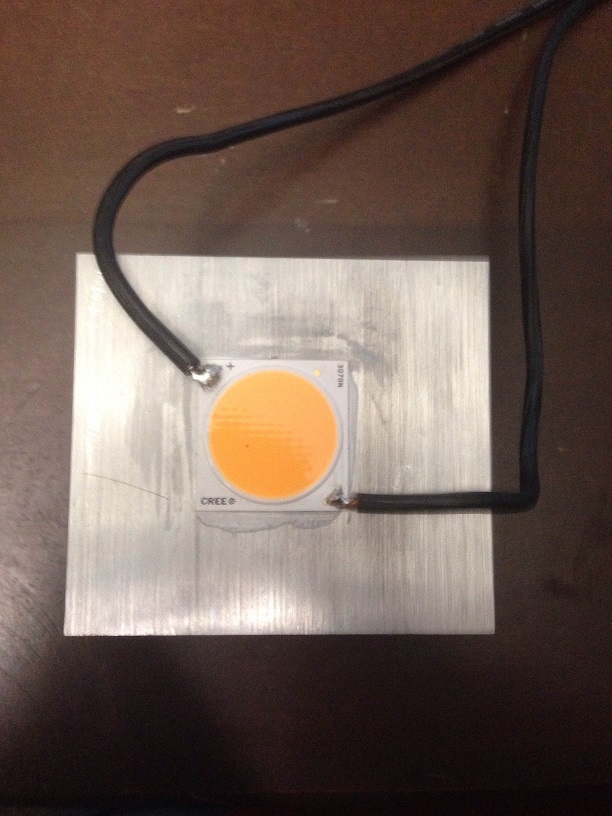pwnguin said:I've been tossing the idea around about building a custom panel. Not sure about the ratios in terms of spectrum, yet. I've settled on the 3w star LEDs, just need to figure out a target wattage/array layout.
In our experiment, hydroponically grown tomato plants (Solanum lycopersicum L.) were grown using a full factorial design with three light intensities (high: 135 μmol·m−2·s−1, medium: 115 μmol·m−2·s−1, and low: 100 μmol·m−2·s−1) at three red (661 nm) to blue (449 nm) ratio levels (5:1, 10:1, and 19:1). Secondary treatments for comparison were 100% HPS, 100% red LED light supplied from above the plant, 100% red LED light supplied below the plant, a 50%:50% LED:HPS mixture, and a control (no supplemental lighting). Both runs of the experiment lasted 120 days during the Summer–Fall 2011 and the Winter–Spring 2011–12. The highest biomass production (excluding fruit) occurred with the 19:1 ratio (red to blue) with increasing intensity resulting in more growth, whereas a higher fruit production was obtained using the 5:1 ratio. The highest marketable fruit production (fruit over 90 g) was obtained with the 50%:50% LED:HPS followed by 5:1 high and 19:1 high. Consistently the 5:1 high performed well in every category. LEDs have been shown to be superior in fruit production over HPS alone, and LEDs can improve tomato fruit production when mixed with HPS.
hortsci.ashspublications.org/content/49/4/448.abstract
The scientists subjected hydroponically grown tomato plants to three light intensities at three red-to-blue ratio levels. Secondary lighting treatments used for comparison included 100% high-pressure sodium (HPS), 100% red LED light supplied from above the plant, 100% red LED light supplied below the plant, a 50%:50% LED:HPS mixture, and a control (no supplemental lighting). Both runs of the experiment were implemented for 120 days during two (summer-fall and winter-spring) seasons.
Results showed that the five highest number of fruit-producing light treatments were 5:1 high (385 fruit), 5:1 medium (358 fruit), 5:1 low (341 fruit), 19:1 high (315 fruit), and 100% LED (310 fruit). "Overall, the highest producing LED treatments consistently outperformed the high-pressure sodium treatment alone," the authors said. "These treatments can be considered an improvement over traditional HPS lighting for greenhouses."
Outcomes also revealed that high irradiance levels resulted in the highest vegetative biomass and fruit production for all ratios. The results showed that the highest biomass production (excluding fruit) occurred using the 19:1 ratio, while higher fruit production was obtained using the 5:1 ratio. The highest marketable fruit production resulted from the 50%:50% LED:HPS treatment. The authors said that the 5:1 high treatment performed well in every category.
http://www.sciencedaily.com/releases/2014/06/140623131205.htm
I wouldnt have settled on 3w LEDs.
I used 4 blue and 21 red on my panel and peppers loved it most. Of those 21: 4 were infrared and the rest were almost a split between 625nm and 660nm but with a few more of the deep red. All 4 blue were the same.
These were all the same brand 5w star LEDs.
If you want to know where I bought them check out mouser.com. But right after they came out with 10w LEDs that put out 4x the light.

Also look up Emerson Effect if you havent already heard of it for why I had 4 infrareds.

